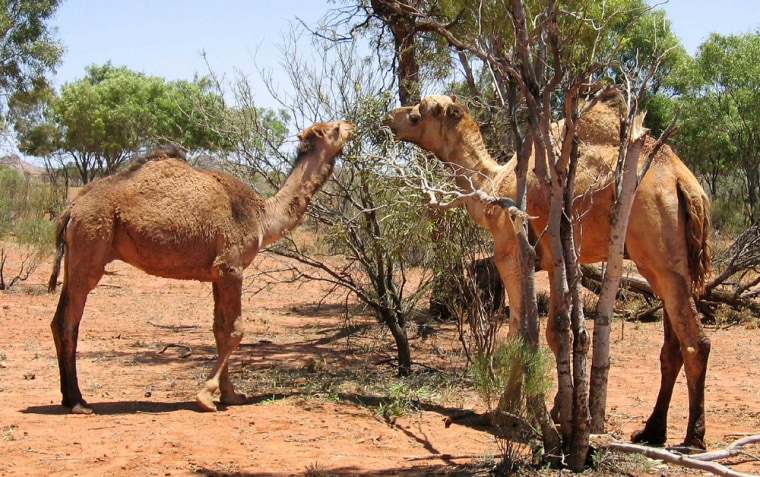Parts of Australia's Outback could soon be overrun by wild camels if drastic measures are not taken to cull them, a wildlife scientist said Wednesday.
Australia is now home to around 500,000 camels roaming the country's vast tracts of desert, said Glenn Edwards, a senior scientist for the Northern Territory provincial government.
Camels were first introduced to Australia in the mid-1800s to transport goods across the desert. When trucks and trains made the beasts of burden unneeded, their owners simply turned them loose.
With no natural predators and ample grazing land, the camel population has exploded in parts of central, northern and western Australia, and could exceed 1 million in the next decade, Edwards said.
"The feral camel population is growing by about 10 percent each year and doubling in size every eight years," Edwards said in a statement. "These camels feed on more than 80 percent of the available plant species in the area they inhabit and have serious impacts on vegetation."
Edwards said camels were also beginning to encroach on agricultural land, causing extensive damage to stock fences and rural infrastructure.
"Camels used to be out of sight, out of mind, living in the more remote desert areas," he said. "Now they are moving out into better country, to pastoral land."
Australia has a history of infestations by animals from overseas. Rabbits brought from Europe swarmed across parts of the Outback and noxious cane toads brought from South America to control bugs in sugar cane fields are now spreading across the north, killing native wildlife from snakes to small crocodiles that eat them.
Officials from the Northern Territory government are calling for a strict management plan to control camel numbers, including moves to harvest the beasts for meat and other commercial products.
But for those camels living in remote areas inaccessible by road, Edwards said there may be little option but to shoot them from the air.
"There probably really isn't any other way," he said.
